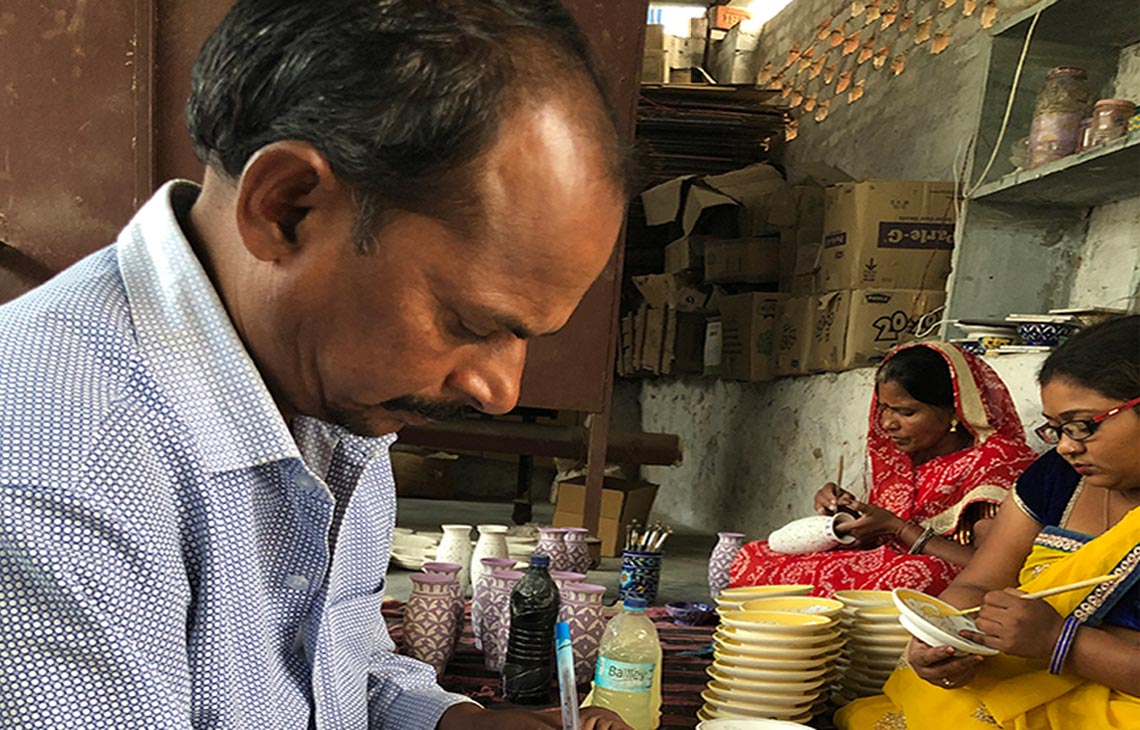
ETHICAL SOURCE
Only an Ideal or a Possible Future?

A famous campaign of the international movement Fashion Revolution says:
“Fast Fashion isn’t free. Someone, somewhere is paying”
It may seem peculiar to describe fashion as a social issue, but the data relating to the environmental and human impact of this industry are suitable to qualify it in this way. In practice, if a piece of clothing costs very little, there will be a reason and in addition to being the second most polluting industry in the world, after the oil industry, the fashion industry has unsustainable human costs. The term “ethical fashion” began to circulate among the most following the tragedy of Rana Plaza, in which on 8 April 2013 an eight-storey building collapsed in Dhaka where 5 different textile clothing factories for international brands were located. In the collapse of the building 1,129 people died and more than 2,500 were injured. Only after this terrible tragedy did the world begin to realize the human consequences of the frenetic fashion market.
Remember that, through what we wear, we communicate what we are. Behind your clothes there is a story that is not told. Whenever we are about to buy a dress, we should ask ourselves who it is that made it. It is not about abstract entities, but about people like us.
The data of the textile industry are currently alarming.
The working conditions in this sector in many countries are very heavy:
In Guandong, China, young workers endure over 150 overtime hours e ach month, 60% without an employment contract and 90% without access to health insurance. In Bangladesh the salary is 44 pounds a month, just a quarter of the minimum wage.

And then, there is the damage to the environment: almost 3,000 liters of water are needed in the processing of a cotton shirt, practically what a human being drinks in three years. Then there is an almost unbearable rate of textile waste: 73 million tons of clothes are thrown away every year.
But do we really use everything we have in the closet?
According to British research, at least 30% of the clothes in a wardrobe are never used and a family, on average, owns unused clothes worth £ 4,000. During a survey conducted on 91 clothing brands that only 12% of these took actions aimed at guaranteeing a legal minimum wage for their workers.

Today the integration of ethics, aesthetics and innovation becomes an imperative.
The consumer becomes increasingly attentive and aspires to greater awareness regarding the entire production process of the goods he buys, from the supply of raw materials to the distribution and related services.
Thus, over the years, projects aimed at promoting the development of local communities in the third world were born with the aim of giving working autonomy to local communities.
These are business projects in which the entire production cycle is carried out respecting the rights of the workers involved. The aim is to achieve a reduction, reuse and recycling of resources throughout the entire supply chain and to give increasing importance to biological and biodegradable fibers or natural dyes.




The characterizing element of the ethical fashion business is therefore transparency. Only through a transparent production chain is it possible to monitor that no human and environmental abuse occurs.
By their very nature, clothing made ethically has higher costs than fast fashion products: a suit made by a worker who receives a minimum wage, who works safely and with an employment contract, by a company that observes environmental regulations and preserves the ecosystem has living costs to maintain that cannot be cut down. So here comes a new breath for contemporary fashion, which blends ethics and aesthetics.

Fashion is creation and the more it manages to move away from momentary styles, the more it becomes capable of transmitting messages, on our personal identity, and on social aspects.
Get informed, take a position, enhance the realities that make garments according to a chain that respects the environment and workers’ rights.
The forecasts for the future speak of an attentive consumer, who reads the label as a purchasing criterion, interested in the materials, the origin and quality of the work of the workforce.

